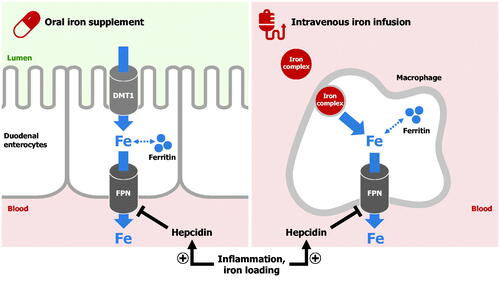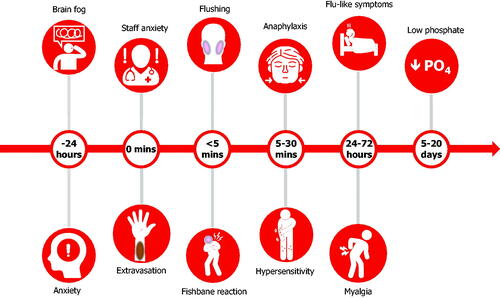Figures & data
Figure 1. The mechanism of oral and intravenous iron treatments. Iron administered via an oral iron supplement is absorbed by duodenal enterocytes. Divalent metal transporter 1 (DMT1) imports iron across the apical surface of enterocytes, whereas ferroportin exports iron across the basolateral surface. The hormone hepcidin, which is increased by iron loading or inflammation, impairs cellular iron export into blood by causing ferroportin degradation. Intravenous iron preparations are administered by infusion, and the iron‒carbohydrate complex is taken up and processed by macrophages in the liver, spleen and marrow. Once iron is released into the cytoplasm, it is either stored in ferritin or exported from macrophages through ferroportin (FPN). Intravenous iron can overcome the hepcidin-mediated block of iron absorption from the gut.

Figure 2. Adverse events associated with the administration of intravenous iron. Adverse events occurring with intravenous iron can be anticipated according to when they typically occur. Educational material and institutional training should prepare patients and staff for their occurrence, minimizing the need to unnecessarily withhold or abandon administration and reducing the need for subsequent patient visits.

